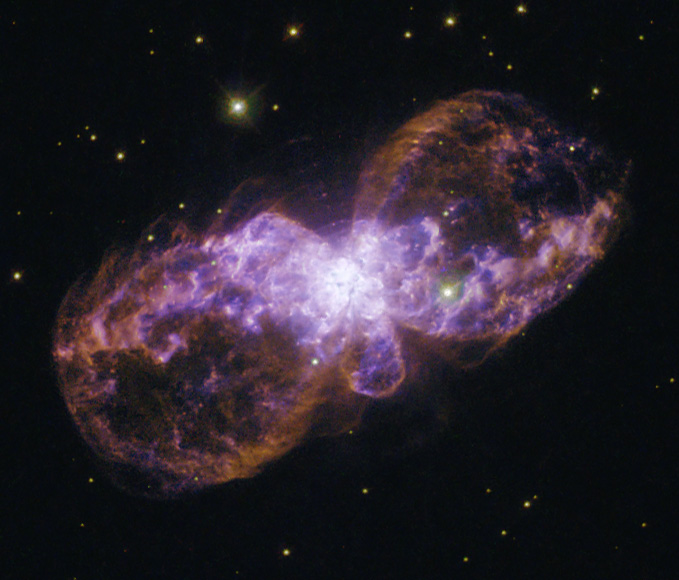
Hubble 5 "Hubble Double Bubble" (2013)
Can’t say I added much to what’s already been done with this nebula, but I thought I’d try and see what happened especially since I haven’t tried a bipolar nebula before.
There’s no wideband data available which makes me wonder how it would look with the usual f555w filter included.
I am guilty of increasing the brightness of the blue channel greatly compared to the others because I like the indigo color produced. Still, blue is OIII as usual and it’s interesting that it seems to lag behind the rest of the nebula so emphasizing it makes that easier to see. I had to double check that my f502n data was really from the same year because it seemed like it was from an earlier time frame.
There are also some repeating concentric structures in this one that look sort of like light echoes. It would be easy to check if there were any images available from another year but I couldn’t find any.
Red: hst_06502_01_wfpc2_f673n_wf_sci + hst_06502_01_wfpc2_f658n_wf_sci
Green: hst_06502_01_wfpc2_f656n_wf_sci + hst_06502_01_wfpc2_f631n_wf_sci
Blue: hst_06502_01_wfpc2_f502n_wf_sci
North is NOT up.
Copyright information:
Hubble data is public domain, but I put a lot of work into combining it into beautiful color images. The minimal credit line should read: NASA / ESA / J. Schmidt

This work is licensed under a Creative Commons Attribution 3.0 Unported License.


